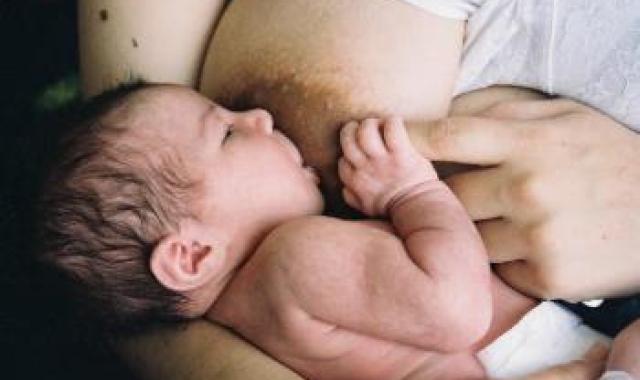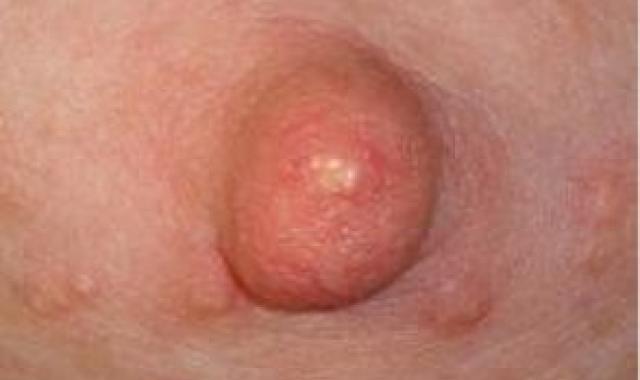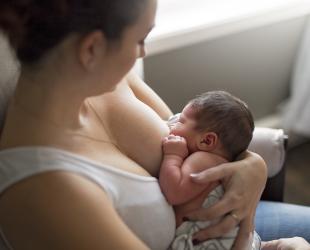White spot on your nipple can be painful.

A white spot on the nipple may also be called a blocked nipple pore, a bleb or a milk blister. It is usually about the size of a pinhead or a bit larger.
The 'white' spot may not be white in colour. It may be more of a pink or light yellow colour. The skin around the white spot may be red and inflamed.
A white spot can appear at any stage of breastfeeding and may come and go. It usually feels sore throughout a feed. Sometimes the pain makes it difficult to breastfeed.
What causes the white spot?
Not a lot is known about white spots. Scientists think that they happen when the opening of a duct that carries breastmilk to the nipple becomes inflamed and closes. This stops the milk from flowing. If your baby is breastfeeding well, they may clear the white spot during a feed and the milk may begin to flow through that duct again.

Managing a white spot
Anything you do to treat a white spot shouldn’t cause damage to the nipple. No-one really knows the best way to treat a white spot, but there are some things you can try at home.
If you have a white spot on your nipple that is not causing any pain or issues with breastfeeding you do not need to do anything to treat it. It may just go away in time.
If the white spot is causing pain, the following things may help:
-
Be gentle with the nipple to avoid causing more damage. Don't pick at or scrape the white spot as this can make it worse.
-
Continue to breastfeed your baby. They may clear the white spot so the milk begins to flow. It may take some time to clear completely.
-
Different feeding positions may be more comfortable.
-
If breastfeeding is too painful, you can try hand expressing to get the milk flowing.
-
A cool pack may help if the breast tissue feels inflamed.
-
Oil applied to the affected nipple may soften the white spot and allow the milk to flow. Choose a food-safe oil (such as olive oil or coconut oil) and gently wipe it away before you breastfeed your baby.
-
Soaking the nipple in warm water before you breastfeed or express may also soften the white spot and help it to clear.
When the white spot goes, you will usually feel instant relief.
See your doctor if your white spot doesn’t go away or becomes very painful. They may be able to prescribe a cream to treat the inflammation.
To prevent a white spot from recurring
-
Breastfeed your baby as often and for as long as they need.
-
Make sure your baby is positioned and attached well, so they can remove milk easily.
-
If you need to express, aim to express only as much breastmilk as your baby needs.
© Australian Breastfeeding Association February 2023
McGuire E. (2015). Case study: White spot and lecithin. Breastfeeding Review, 23(1), 23–25.
Mitchell, K. B., & Johnson, H. M. (2020). Breast pathology that contributes to dysfunction of human lactation: A spotlight on nipple blebs. Journal of Mammary Gland Biology and Neoplasia, 25(2), 79–83.
Mitchell, K. B., Johnson, H. M., Rodríguez, J. M., Eglash, A., Scherzinger, C., Zakarija-Grkovic, I., Cash, K. W., Berens, P., Miller, B., & Academy of Breastfeeding Medicine (2022). Academy of Breastfeeding Medicine clinical protocol #36: The mastitis spectrum, revised 2022. Breastfeeding Medicine, 17(5), 360–376.
Obermeyer, S., & Shiehzadegan, S. (2022). Case report of the management of milk blebs. Journal of Obstetric, Gynecologic, and Neonatal Nursing, 51(1), 83–88.

